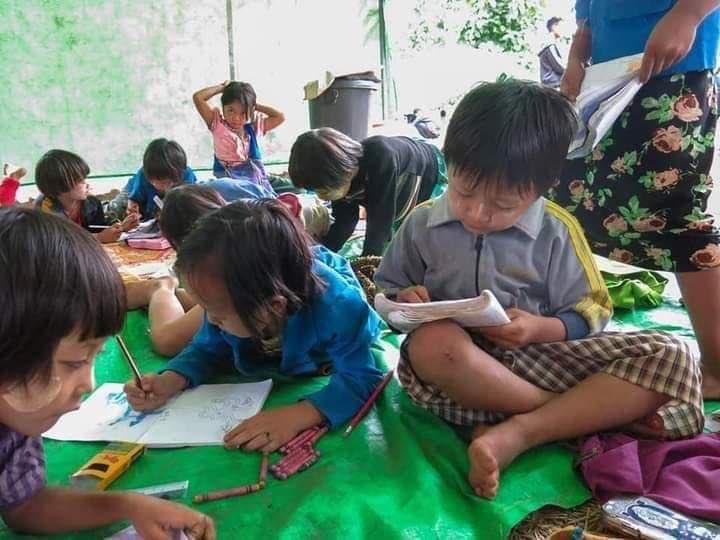Before the junta roundly failed in its latest attempt to entice Burma’s children back to school last week, Karenni State had already decided to take matters into its own hands by opening 200 self-funded federal schools.
The schools, which cater predominantly to learners in IDP camps, are operating largely on internal funding and donations from within the region, says Ko Banyar, director of the Karenni Human Rights Organisation.
“The reason for the large number of students [in our schools] is that the highest number of children come from the refugee population. More than half of those attending—over 60 percent—are children drawn from the IDP camps,” he told DVB, adding that many of these schools are in Demoso and Hpruso townships.
UN OCHA has estimated that 85,900 people were displaced by military raids across Karenni State as of October, with roughly 1,600 people each displaced across seven locations in Hpruso and Bawlakhe townships alone. The smallest of Burma’s regions by area, Karenni is experiencing the country’s largest refugee crisis—not only per capita, but also in absolute terms.
Ko Banyar added that most of Karenni’s students will now be attending these new, independent, “self-help” schools.
The scheme’s teachers—now totalling over one thousand—are doing their best with the few resources at hand, he says, and are further limited by trade and travel restrictions imposed both locally and on the Thai border. Most are participating in the state’s CDM, and a number have been recruited from the IDP camps themselves to help assist the federal education initiative: after the coup, many striking teachers have volunteered to run education initiatives amongst Karenni’s displaced people instead of working under the junta.
The first school operating under the initiative opened around three months ago, yet others continue to follow; mostly those offering a pared back syllabus for primary school children. The schools provide an alternative to the state’s military-backed schools, set up specifically in Loikaw and Bawlakhe. While an average classroom boasts around 50 students, the largest can contain up to 150 per class; such is the demand for teaching independent of the junta.
Where schools face funding gaps, Karenni Nationalities Defence Force brigades have stepped in to offer their assistance. In addition to courses taught by CDM teachers, soldiers are now offering month-long education programmes and coursework preparation for children.
“They help as much as they can, but it is different from what other schools teach,” said Ko Banyar.
The establishment of a civil service entirely independent of the occupying force is a complex process. What is certain is that all groups within Karenni State are cooperating to make it a reality: refugee committees have been able to establish teaching initiatives in IDP camps, whilst KNDF brigades drive support for local relief funds to foster the growth of independent education and healthcare sectors. In addition to this, Ko Banyar says that soldiers are currently assisting villagers in harvesting their crops.
“They are teaching courses to make children mentally and physically comfortable.”
The opening of independent schools in Karenni comes as similar schemes by independent public administrations launch across Burma. DVB recently spoke to Mindat PAF who have established a functioning primary school system on the other side of the nation, in embattled Chin State.



